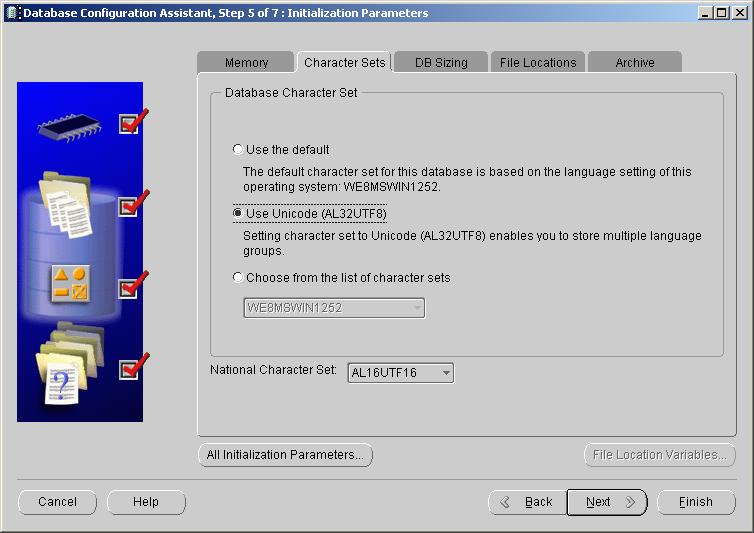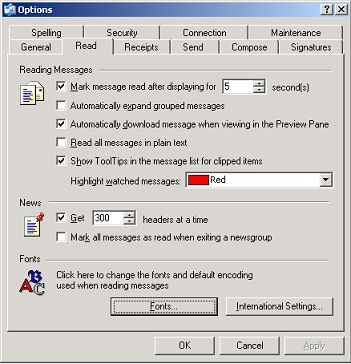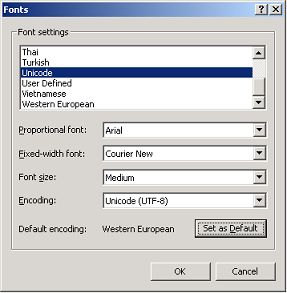Configuring Double-byte Support for eG Enterprise
eG Enterprise embeds the ability to store and display data in any language that the user wants. Each user connecting to an eG manager can thus view data in a language that he/she prefers.
While eG Enterprise can support all European languages with minimal configuration, some additional configurations need to be carried out to make sure that the suite supports Chinese, Korean, or Japanese. This is because, unlike their peers, these three languages support a double-byte character set. The steps below discuss these special configurations elaborately:
- The first step towards ensuring that eG Enterprise handles Chinese, Korean, or Japanese characters is to double-byte enable the eG manager. This can be performed during manager setup itself. When the setup process prompts you enable/disable double-byte support, press y (in the case of a Unix manager)) or click the ok button (in the case of a Windows manager) to enable double-byte support.
-
Secondly, you need to configure the eG database to store and process double-byte characters. If an MS SQL server is used as the eG backend, then no additional configuration is necessary to enable double-byte support. However, if an Oracle database is used as the eG backend, then you will have to explicitly change the NLS settings of the Oracle server, so that the database server is able to store double-byte characters. For that, while creating an Oracle database instance, do the following:
- Click on the Character Sets tab
- Select the Use Unicode (AL32UTF8) option
- Select AL16UTF16 as the National Character Set
-
If a Database Configuration Assistant is used to configure the Oracle instance, then the aforesaid parameters can be set as depicted by Figure 4.1 below.

Figure 1 : Configuring the Oracle database instance to support double-byte
- Next, ensure that you add multi-language support to the browser host (i.e., the host from which you will be connecting to the eG manager), and the eG manager host.
- Next, the font and Unicode settings for your mail client should be configured, so that eG alerts received by the client display double-byte characters. For instance, to ensure that your Outlook Express client supports double-byte characters, do the following:
- First, open the Outlook Express client, and follow the menu sequence: Tools -> Options.
-
Click on the Read tab page in the Option dialog box that opens, and then click on the Fonts button in the Read tab.

Figure 2 : Clicking on the Fonts button
-
In the Fonts dialog box, select Unicode from the Font Settings list, select any Universal font from the Proportional font list, and choose the Unicode (UTF-8) option from the Encoding list. Finally, click the ok button to save the changes.

Figure 3 : Defining font settings
-
To display double-byte data, eG Enterprise requires Universal fonts. The preferred Universal fonts are:
- ArialUniCodeMS - Sutiable for Chinese,Korean,Spanish,german, Japanese,French, Porthugese,German,spanish,Russian
- Code2000 - Sutiable for French,Porthugese,German,spanish,Russian
- evermono -Suitable for Chinese, Korean, Spanish, German, Japanese, French, Portugese,German, Spanish, Russian
- Cyberbit - Suitable for Chinese, Korean, Spanish, German, Japanese, Spanish,Russian
Ensure that the Universal font file that corresponds to your language preference is downloaded to the eG manager host and copied to the <EG_INSTALL_DIR>\manager\fonts folder.
Note:
While copying the font files to the above-mentioned directory, ensure that the font file extensions are in upper-case - in other words, copy the font files as .ttf and not .\ boldttf.
-
Also, to ensure that multi-byte support is extended to the eG reports that are saved as PDF documents, do the following:
- Edit the file <EGURKHA_INSTALL_DIR>\manager\fonts\pd4fonts.properties file.
-
By default, the path to the multi-byte font file that is bundled with the eG manager will be displayed against the following entries in the pd4fonts.properties file:
LucidaGrandeRegular=../tomcat/webapps/final/fonts/6216/6216.TTF
LucidaGradeBold=../tomcat/webapps/final/fonts/6215/6215.TTF
LucidaGrandeRegular\ bold=../tomcat/webapps/final/fonts/6216/6216.TTF LucidaGrandeBold\ bold=../tomcat/webapps/final/fonts/6215/6215.TTF
-
Replace the path configuration against each of the aforesaid entires with the exact name of the font file (with extension) that you downloaded and copied to the <EG_INSTALL_DIR>\manager\fonts directory at step 3 above. For example, if you had copied the Code2000.TTF file to the <EG_INSTALL_DIR>\manager\fonts directory previously, then specify Code2000.TTF against each of the above-mentioned entries in the pd4fonts.properties file, as depicted below:
LucideGrandeRegular=Code2000.TTF
LucideGradeBold=Code2000.TTF
LuncidaGrandeRegular\ bold=Code2000.TTF
LucidaGrandeBold\ bold=Code2000.TTF
- Then, save the file.
- Finally, restart the eG manager.
Note:
If your eG manager is double-byte enabled, but the Language preference that you have set in the user profile page is English, then, you do not have to follow the steps discussed above to ensure that reports are saved as PDF documents. However, while using a double-byte enabled eG manager, if you have chosen to view data in a Language other than English, then reports cannot be saved as PDF documents until the above-mentioned steps are followed.
